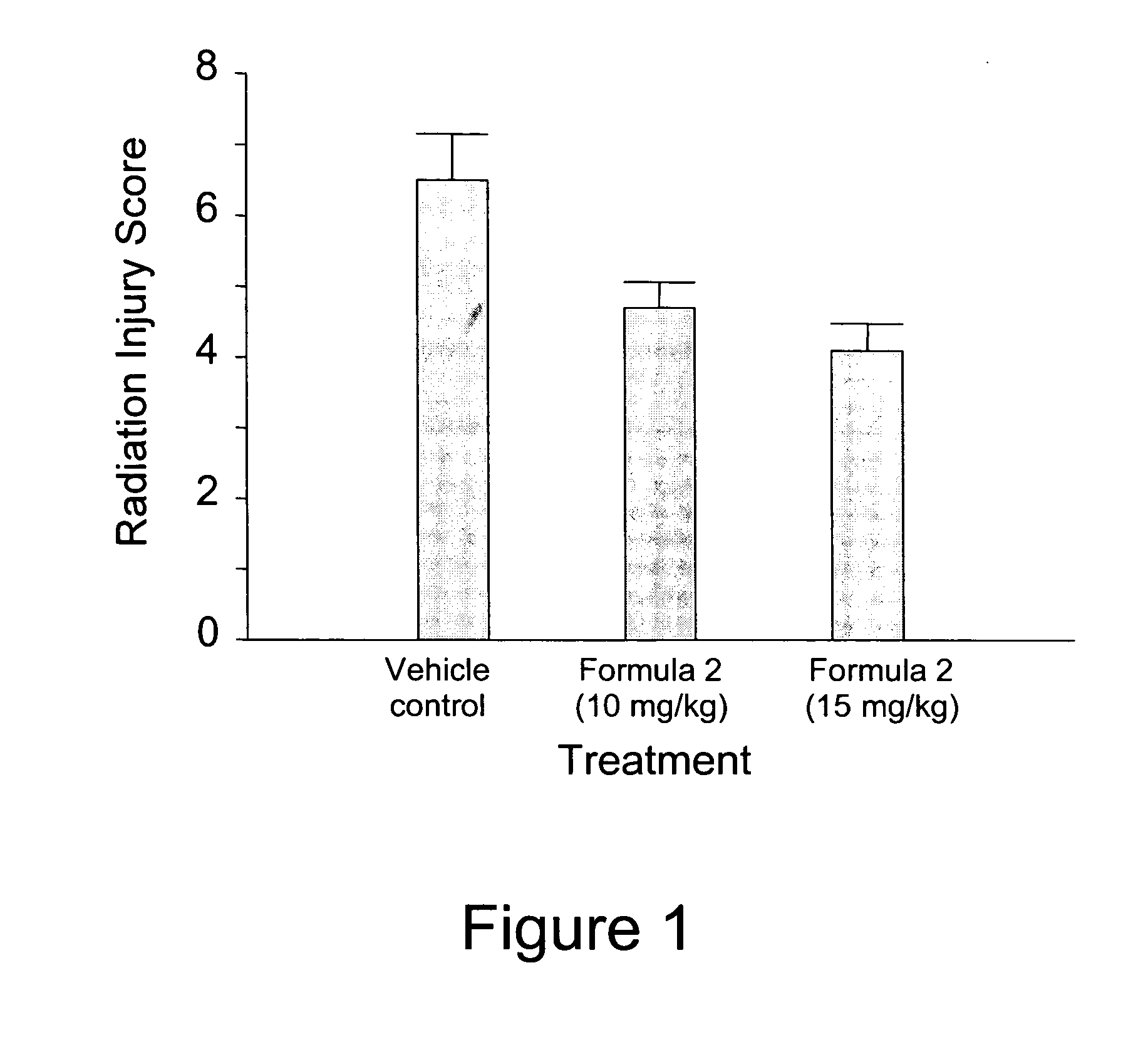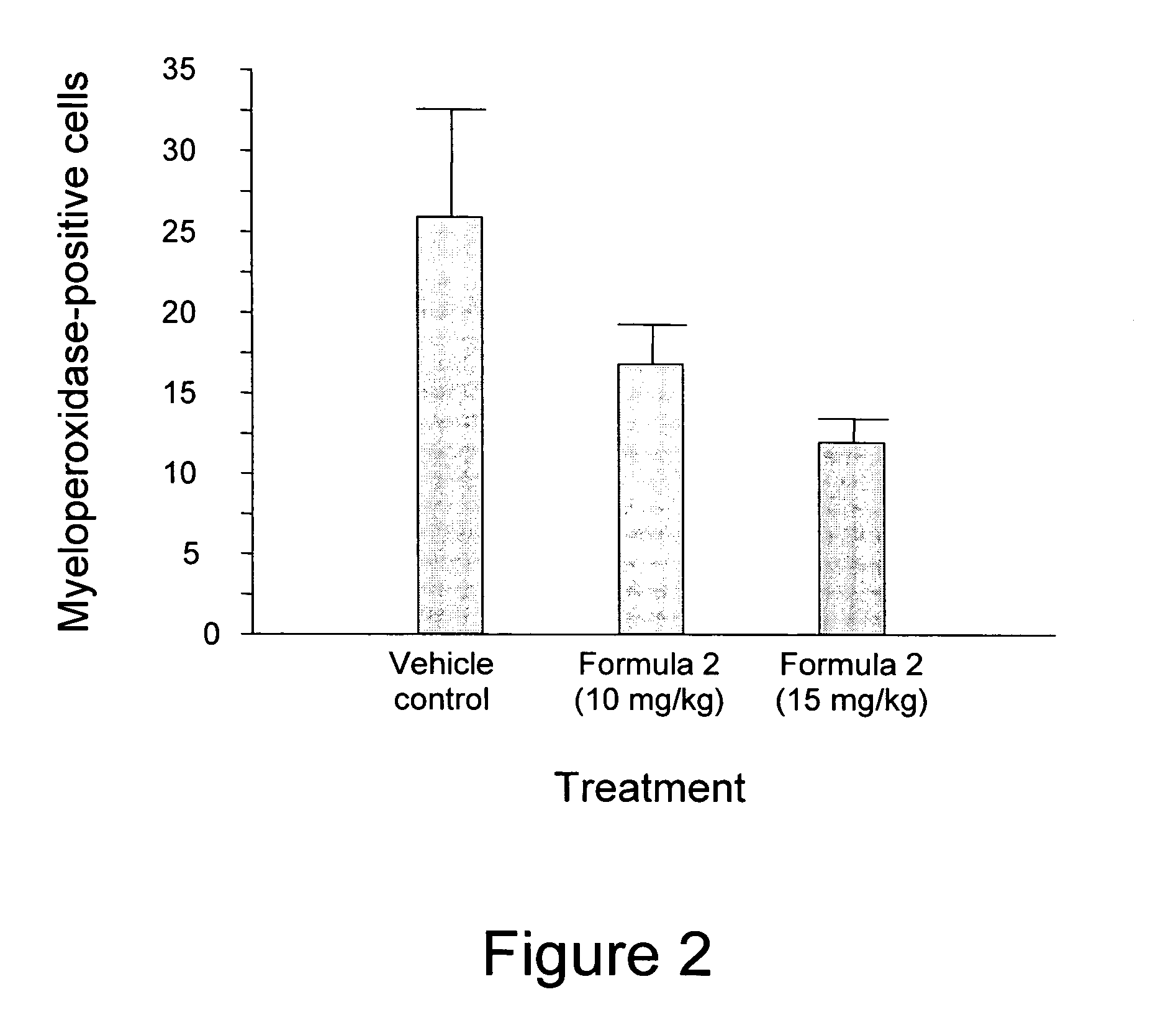Methods to treat and/or prevent radiation- and/or chemical-induced toxicity in non-malignant tissue
a non-malignant tissue, radiation and/or chemical technology, applied in the direction of biocide, drug composition, anti-noxious agents, etc., can solve the problems of reducing dose or dose interruption, affecting the survival rate of patients, etc., to achieve the effect of reducing lethality
- Summary
- Abstract
- Description
- Claims
- Application Information
AI Technical Summary
Benefits of technology
Problems solved by technology
Method used
Image
Examples
experiment 2
[0059] Intestinal Fibrosis—Experiment 2
[0060] Scrotal hernias are created in rats which subsequently receive one of three different treatments: (i) vehicle control; (ii) 10 mg / kg / day of Formula 2; and (iii) 15 mg / kg / day of Formula 2. The treatments start the day before irradiation (i.e., Day-1) and are administered subcutaneously for 24 days followed by administration in the chow for the next 168 days (i.e., s.c. administration from Day-1 to Day 23, followed by p.o. administration from Day 24 to Day 191). On Day 1, the scrotal hernia of each animal is irradiated locally by exposure to 5 Gy for 9 days. After an additional 2 week observation neriod following treatment, the rats are euthanized and assessed for radiation toxicity using endpoints such as structural radiation injury, immunohistochemistry (e.g., neutrophil infiltration, collagen type III deposition, smooth muscle cell proliferation, extracellular matrix-associated TGF-β immunoreactivity, collagen type I deposition, macroph...
PUM
| Property | Measurement | Unit |
|---|---|---|
| Level | aaaaa | aaaaa |
| Toxicity | aaaaa | aaaaa |
| Lethality | aaaaa | aaaaa |
Abstract
Description
Claims
Application Information
 Login to View More
Login to View More - R&D
- Intellectual Property
- Life Sciences
- Materials
- Tech Scout
- Unparalleled Data Quality
- Higher Quality Content
- 60% Fewer Hallucinations
Browse by: Latest US Patents, China's latest patents, Technical Efficacy Thesaurus, Application Domain, Technology Topic, Popular Technical Reports.
© 2025 PatSnap. All rights reserved.Legal|Privacy policy|Modern Slavery Act Transparency Statement|Sitemap|About US| Contact US: help@patsnap.com



